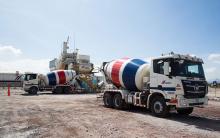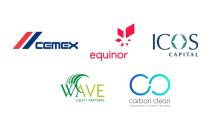
Building materialsgiant CEMEX says the targets are a key component of its Future in Action programme that is focused on developing low-carbon products, solutions and processes to transition to a net-zero CO2 company by 2050.
According to climate action body SBTi, CEMEX’s targets are in conformance with its criteria and recommendations to approve companies´ targets and in line with what the climate science deems necessary to meet the goals of the Paris Agreement – limiting global warming to well-below 2°C above pre-industrial levels and pursuing efforts to limit warming to 1.5°C.
CEMEX clais to have the most ambitious 2030 targets for the cement industry, a reduction of the net GHG direct emissions of 40% vs. a 1990 baseline, meaning an expected reduction in direct (Scope 1) greenhouse gas (GHG) emissions of 20% per ton of cementitious material by 2030 from a 2020 base year. CEMEX has also committed to reduce its indirect electricity GHG emissions (scope 2) by 42% by 2030 from a 2020 base year.
CEMEX CEO Fernando Gonzalez said: “Climate action is the biggest challenge of our times. CEMEX is taking decisive action to address it by defining ambitious emissions reduction targets in line with the Science Based Targets initiative and executing against those targets.
“We commit to continue leading the industry in climate action not only because it creates value, but more importantly because it is the right thing to do. CEMEX is building a better future, and that future must be sustainable.”
Under its Future in Action programme, CEMEX announced a climate action target of below 475 kg CO2, a >40% reduction in CO2 emissions by 2030. The company says its clean electricity consumption will also increase from the current 29% in 2020 to 55% by 2030. These goals also align with the well-below 2oC scenario and enable the company to also reaffirm its 2050 goal of being net-zero carbon in concrete.








